Islands of the Global Hispanophone: Islands of Empire
Islands are material, physical, tangible spaces, and confined geographies, but also conceptual entities with the power to shape history and imagination and to connect dispersed localities. Islands forge patterns of transit, travel, and transcultural exchange, as well as human, political, and cultural entanglements. This article will contribute to an alternative map of island spaces embedded within the contours of the Global Hispanophone. 1 This map includes island territories and archipelagos – anchored across the Caribbean, the Atlantic, the Mediterranean, and the Pacific – which were once touched by the Spanish Empire and are bound by its aftereffects: from Cuba, Puerto Rico, and Hispaniola to Bioko (formerly known as Fernando Poo), Corisco, Elobey, and Annobón; from the Canary Islands, the Chafarinas, and the Balearic Islands to the Philippines, the Marianas, and beyond. Islands and archipelagos function as a constellation of fragments, small continents from which it is possible to reorganize the archive of the imperial oceanic immensity, advance new epistemologies, and retrace patterns of transit and connectivity, including cultural and political connections both past and present.
Islands and violence
In the conventional Eurocentric imagination, it is still difficult to avoid (and therefore to dismantle) the cliché of Columbus’ first voyage to the Caribbean as a moment of epiphany, a breakthrough “discovery,” albeit one with execrable consequences. As John Gillis has put it, for a 15th-century audience, “Oceanus [the Atlantic] ceased to be imagined as an impassable barrier and became the all-connecting sea.” 2 It is from this period, the so-called age of exploration, that the Western semantic and conceptual distinction between islands and continents under which we still operate today derives: islands began to be defined by their relationship with water, and continents by their territorial contiguity. Gilles Deleuze’s attempt at a more nuanced distinction between “continental islands” and “oceanic islands” adds, perhaps, a quantifying dimension to the two categories, 3 but it also reinforces the same binary paradigm between water, fluidity, and territorial and imperial expansion. Within the oceanic imaginary, the centrality of islands as spatial entities, both in the early Iberian imperial project of the Americas – and all along the West African coasts in the preceding decades – is indisputable, in geohistorical and in economic terms: “It was islands, not continents, that first lured Europeans offshore in the fifteenth century,” Gillis asserts. 4
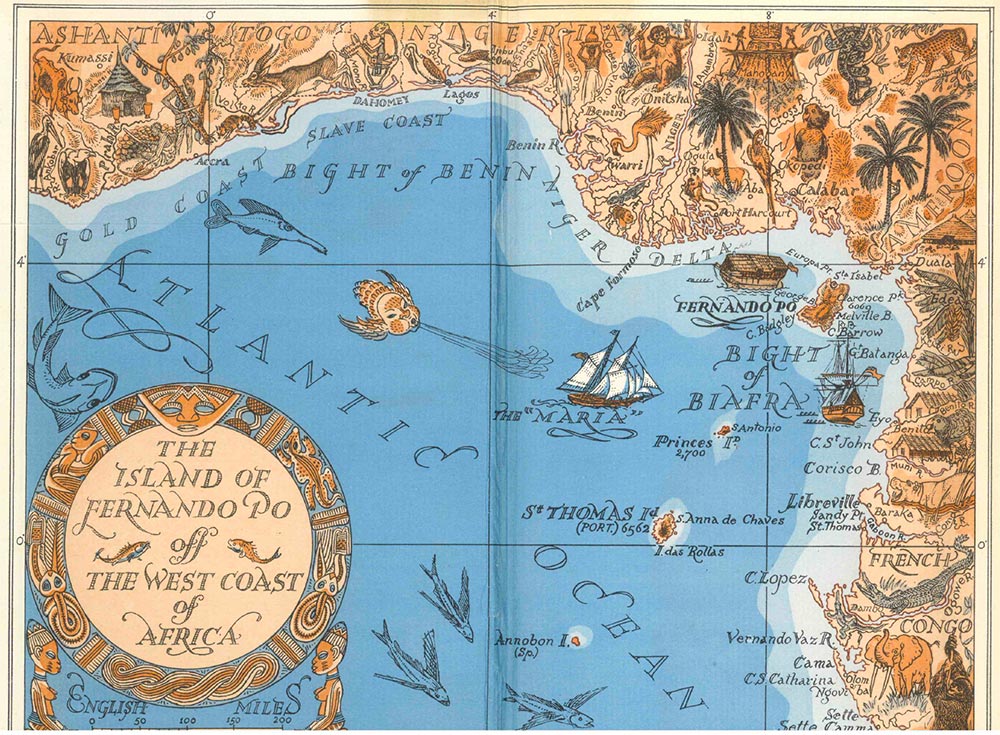
Fig 2: Island of Bioko (formerly known as Fernando Poo), in the Gulf of Guinea, today part of Equatorial Guinea. (Map included in The Diary of John Holt and the Voyage of the “Maria”, Liverpool, 1948)
In a collection of essays that places at the center of critical scrutiny the multiple figurations in which islands around the world have been used, imagined, and theorized, Rod Edmond and Vanessa Smith remind us that the colonial history of the Caribbean is inscribed in ocean trajectories as well as island locations and, furthermore, “some of the most brutal colonial encounters have occurred on islands, such as those of the Caribbean or Tasmania, where the license of enclosure has enabled campaigns of annihilation to be enacted upon local populations.” 5 Yet the recognition of islands and archipelagos as distinctive spaces of knowledge and textual production and transfer, and as privileged loci of enunciation in the articulation of critical perspectives on empire, violence, transoceanic, and transcultural exchanges, merits further insistence. After all, managing power, empire, and postimperial fallouts from island spaces is a practice marked by a long trajectory. 6
Taking advantage of islands as spaces that are naturally propitious for imperial expansion and for the colonial enterprise has been a ubiquitous trope, not only because of their potential as utopian spaces, but also because – as Edmond and Smith have expounded – both rhetorically and geographically speaking, “islands, unlike continents, look like property.” 7 Especially in a maritime age, islands appeared more readily available for grab, possession, colonization, domination, and imposition of new regimes of violence. The Canary Islands and the Caribbean were among the earliest laboratories for Iberian imperial plunder and global connectivity, from the 1490s onwards. Earlier plantation experiments, pearl and gold mining, environmental degradation, human exhaustion, transatlantic trafficking, and the repopulation of islands with new laboring communities, animal species, and exportable commodities, all invite us to think of the Canary Islands, Hispaniola, Annobón, and beyond as islands of empire, today bound under the badge of the Global Hispanophone.
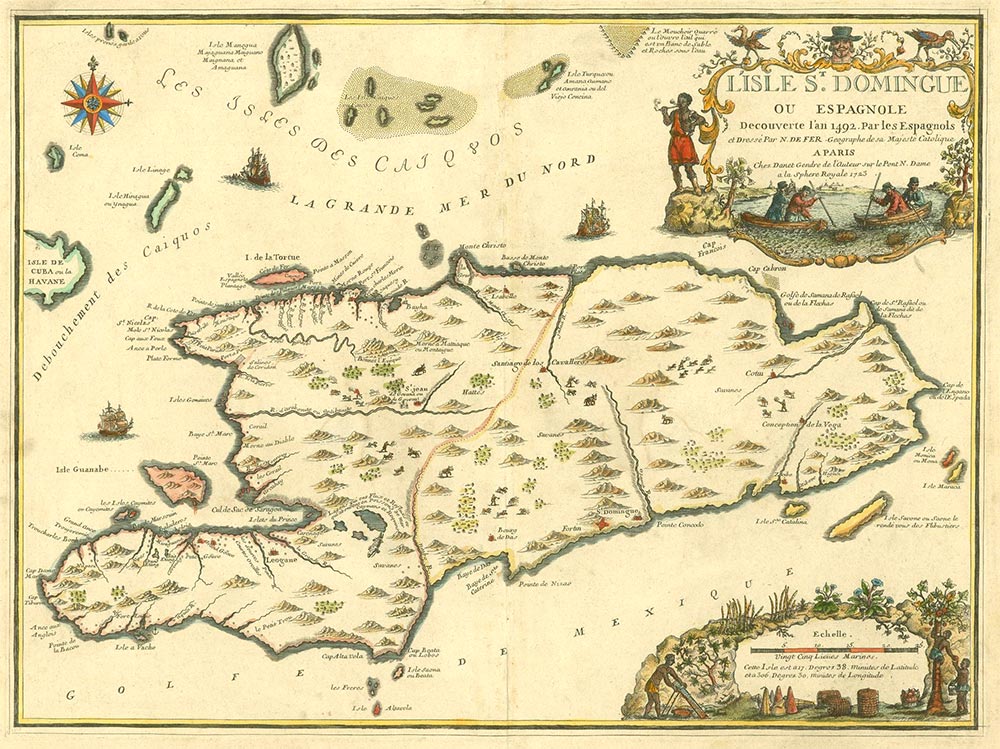
Fig. 3: Map of the Island of Hispaniola, which contains the present-day countries of Haiti and Dominican Republic, by Nicolas de Fer, 1723. (Map courtesy of the John Carter Brown Library collection)
Annobón (Anno Bom in Portuguese), an island on the Southern Atlantic crossing, and currently part of the Spanish-speaking Republic of Equatorial Guinea, fell under the Portuguese in 1473 and was transferred to the Spanish Empire in 1778. It has been repeatedly marked by historic and present-day violence, and by ongoing isolation, conditions that seemed to preclude any opportunity for agency and autonomy. Conventionally, it has been treated through the discursive prism of victim narratives. Yet, in the last couple of decades, there have been concerted attempts to recast a new island narrative through literary, journalistic, and artistic production by Annobonees authors. Island-born writers, performers, and plastic artists – including Francisco Zamora Loboch, Juan Tomás Ávila Laurel, Nánãy-Menemol Ledjam, Desiderio Manresa Bodipo, and Francisco Ballovera Estrada – have sought a liberational politics that might help to redeem their people from multiple forms of disenfranchisement, arising from former colonial oppression and current national political repression and environmental degradation. 8
In their works, we can trace an attempt to reverse Annobón’s marginalization by carving out a niche within global Atlantic and archipelagic literary and artistic topographies, erecting a new canon and exploring alternative forms of resistance at the crossroads of environmental politics and traditional practices. Yet, this effort to rewrite the island’s character is both a contested rivalry among equally marginalized insular spaces and a shared reality within the broader Atlantic, Pacific, and Mediterranean contexts, and one not limited to the 15th- and 16th-century ventures. It continued in later periods in a myriad of reformulations. “Concurrent with the inter-imperial shockwaves incessantly destabilizing pre-eighteenth century territorialities, the islands and coasts of the Atlantic … were subject to multiple invasions, repeated devastation, and demographic and economic violation,” Hernández-Adrián asserts in reference to the Canary Islands. 9 Tensions between internal and external forces were the continuing predicament for insular spaces, simultaneously across and between inter- and intra-imperial territories under the same colonial designs.
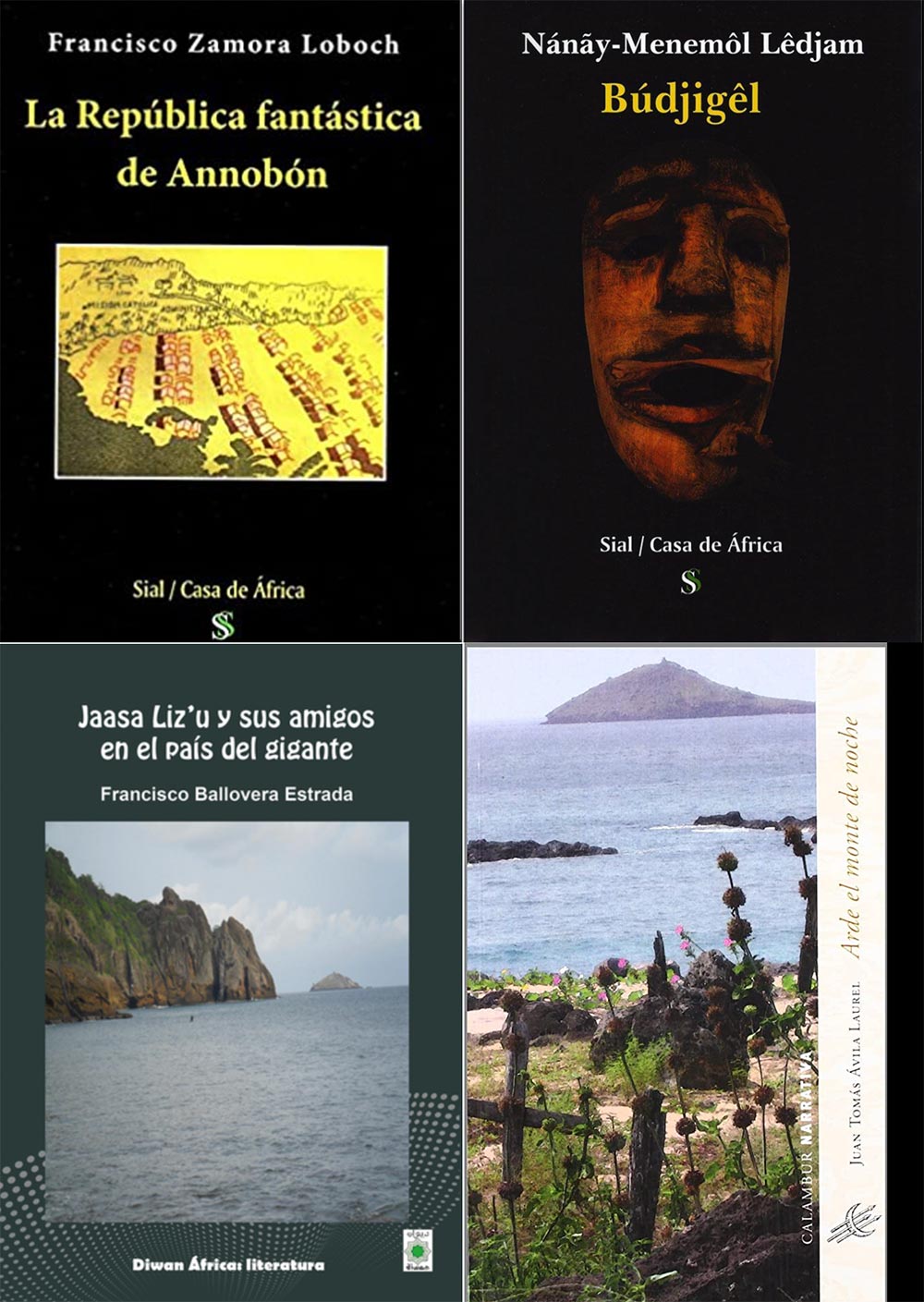
Fig. 4: Selection of book covers from recent works by Annobonese writers. (Photo composition prepared by the author.)
Carceral islands
This section features one concrete historical dimension of insularity that connected some of these island spaces of the Global Hispanophone in the second half of the 19th century. It serves to further highlight the role of these islands as sites of transfer, confinement, and punishment, as a result of the repressive politics of the Spanish imperial administration. It encompasses a succession of large-scale punitive relocations of individuals between islands, forced deportations, and island presidio experiences in insular penal colonies within the global contours of the late Spanish Empire. These experiences involved political, administrative, penal, and military transportation across the oceans, confinement and, ultimately, in the best of cases, freedom.
Within the realm of the Global Hispanophone, punitive relocations from the 1850s onwards originated most intensively in Cuba, but also in Puerto Rico and the Philippines, as well as in peninsular Spain, and they materialized in presidio sites in Spanish ultramarine territorial possessions off the coasts of both North and Sub-Saharan Africa. 10 The confinement sites were primarily insular (and occasionally semi-insular) Spanish satellite enclaves, considered peripheral to the metropolis, yet sometimes adjacent to it, or comprising an extra-territorial extension of it. They included the North African presidios of Ceuta, Melilla, and the Chafarinas Islands, in addition to insular spaces off the Atlantic coast of Africa, namely the Canary Islands and the island of Fernando Poo in the Gulf of Guinea. These offshore African prisons had a particularly grim reputation during the active period of these deportation politics (1850s-1890s): if Chafarinas was deemed the most inhospitable, Fernando Poo was consistently considered the most mortiferous.
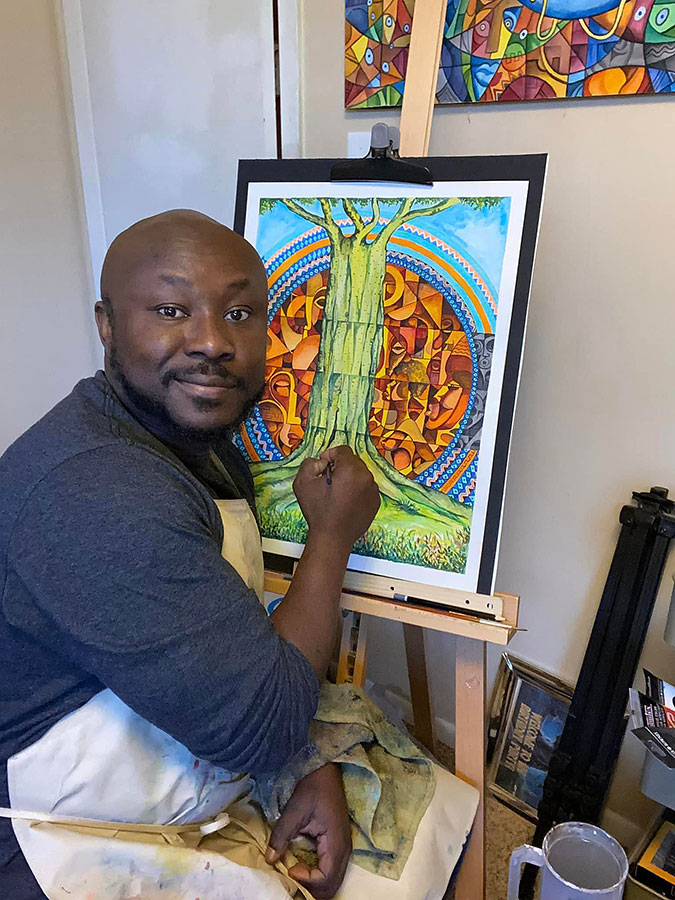
Fig. 5: Annobonese painter Desiderio Manresa Bodipo at work. (Photo reproduced with artist’s permission.)
Forced exile and deportation, as well as the confiscation of property, became regular methods of coercion, repression, and punishment by the Spanish administration. Such practices gained momentum from the 1860s onwards as a means of suppressing anticolonial movements, abolition struggles, and fights for independence. The Captains General of late imperial Spain were licensed with practically all-encompassing authority, which included the power to relocate colonial subjects extrajudicially, by administrative order. Meanwhile, the militarization of the insular colonial sites allowed for the extensive use of force to execute orders of confinement and deportation, as tools to maintain colonial order at home, to provide labor supply networks in ultramarine territories, and to respond to anti-colonial insurgencies as deemed fit, without significant checks or balances. Militarization also facilitated deterritorialization, mass transportation across the Atlantic and the Pacific, and confinement in African islands as vehicles for targeting specific Caribbean and Filipino social groups defined by political affiliation, race, class, ethnicity, or social standing.
Although the administrative and judicial practice of deportation was systematically carried throughout the expanse of the Spanish Empire in the late 19th century, Cuba was the territory from which these deportations most intensively departed. This may be attributed to its concrete historical circumstances: in Cuba, the state was intimately linked to the plantation and post-plantation economy, and to abolition and post-abolition social readjustments: slavery was officially maintained until 1886, making it the last island to abolish it in the Caribbean. This was coupled with widespread racial repression, under the imagined imperative of disciplining a newly emancipated workforce. The racial, social, and political targets for deportation by the Spanish administration were, however, multiple, and localized political events (including the three wars of independence) often provided the colonial authorities with the opportunity to address the perceived challenges posed by socially diverse groups, across blurred categories. 10 By 1860, the African island of Fernando Poo, which had fallen under Spanish control at the end of the 18th century, began to serve as the destination for a forcible eastward transfer of black Cuban emancipated subjects, used as a labor force and for colonizing purposes. Cuban political deportations to African presidios began in 1866, and they radically intensified after the outbreak of the Ten-Year War (1868-1878). The level of social danger perceived by colonial authorities in Cuba determined the distance, length, and site of the deportation, but commonly chosen destinations were the island of Fernando Poo and the Chafarinas Islands, as well as the Balearic Islands and the Mediterranean coastal presidios of Ceuta and Melilla. A new wave of Cuban deportations to some of the same insular locations took place in the outbreak of the so-called Guerra Chiquita (1879-1880). A last wave of Cuban political dissidents in the 1890s was associated with the War of Independence and the Cuban American War.
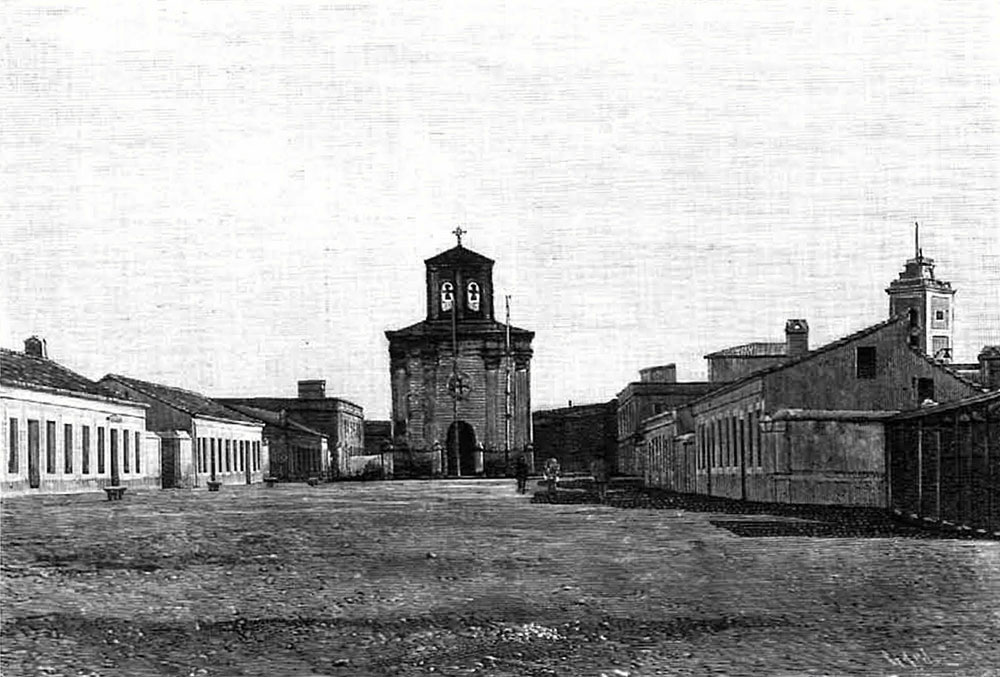
Fig. 6: Confinement Island of Isabel II, part of the archipelago of Chafarinas, off the Mediterranean coast of Morocco, church and other buildings. La Ilustración Española y Americana, 1893. (Photo courtesy of unkown Wikimedia Commons user)
Islands of connection
For all these reasons, a recentering of the island as a critical site for engagement with transcultural exchanges in historical perspective is pivotal. It is understood, and even an essential premise, that the island does not necessarily function as an independent and isolated unit of analysis, but rather as one whose theorization is enriched when studied in relation to (and based on) its links with the archipelago, the coast, the maritime culture, and the imperial and postimperial history that underlies its present. This approach renders itself useful for a critical narrative reconstruction of imperial and postimperial historiography. But it is also posed as an intervention not to articulate a specific and intrinsically insular epistemology, but precisely because of its relation to colonial experiences, inter-territorial transits, and transoceanic connections. In this negotiation between the local and the global, island theorization can be understood not only as a place (or the epicenter) from which to approach the narrative textuality of empire and its aftermath, but also, and perhaps simultaneously, as a model of critical approach and inquiry in our contemporary engagement with transcultural exchanges.
In addressing the etymological valence of islands, Hernández-Adrián has termed this recentering of focus, from the mainland to islands, as “nissology”: the study of islands on their own terms. This reconstruction of an oceanic geography and historiography from an insular vantage point might be useful, perhaps, for a critical understanding of the historical constructions according to which islands and archipelagos of the Global Hispanophone – in the Caribbean, the Gulf of Guinea, the Canary Islands, the Balearic Islands, the Philippines, the Mariana Islands, and beyond – function as a constellation of territories both large and small, as pseudo-continents from which it is possible to reorganize the archive of the imperial oceanic vastness. It goes without saying that each insular archive has its own ambitions, aspirations, particularities, but all contribute to a unique theorization of a critical space where past and present violence remains tied to imperial articulations.
This proposal to recenter the place of island and coastal histories within the Global Hispanophone in the mapping of transcultural exchanges renders the distinction between inside and outside, insular and mainland (and, perhaps by extension, bordering) more complicated and at times more diffuse. It favors connectivity and continuity over landmasses and borders. The paradox of the island, which makes it ever more productive from a critical and analytical standpoint, resides precisely in the fact that it simultaneously presents us with bounded and unbounded space: It is both a liminal area and a gateway. Ultimately, to think physically and figuratively from, through, and between islands and archipelagos is to engage with the very opposite of a totalizing oceanic version of past and present, space and place, empire and hegemony. It is to begin from premises of multiplicity.
Benita Sampedro Vizcaya is professor of Spanish colonial studies at Hofstra University in New York. Her research engages with Spanish colonial pasts and presents, archives, and legacies both in Africa and Latin America and the Caribbean. She is invested in the study of colonial links within and beyond the frame of the multiple Spanish imperial Atlantic and global networks. Email: Benita.Sampedro@Hofstra.edu